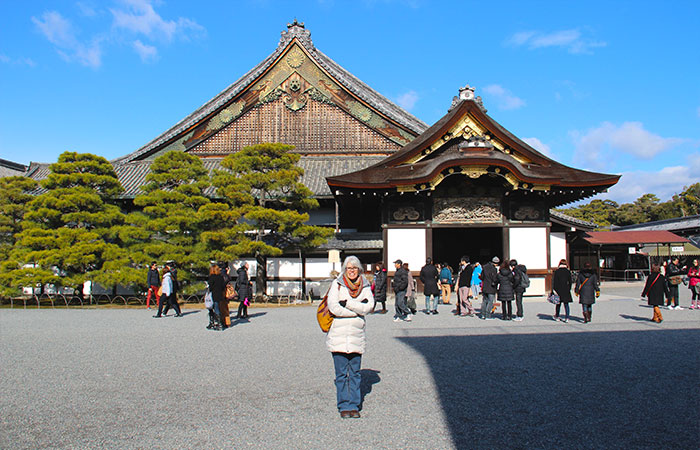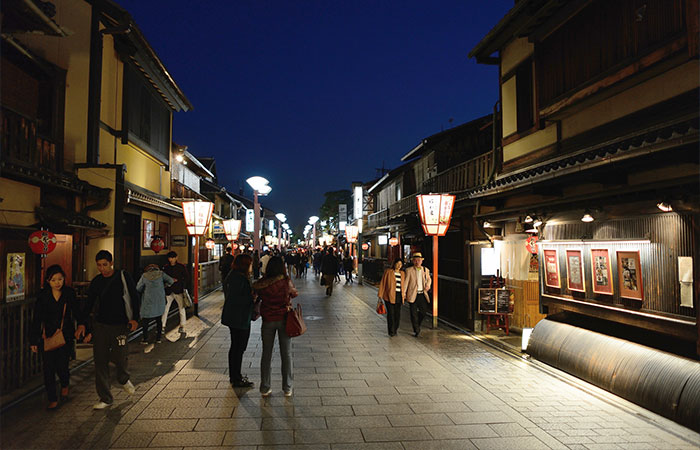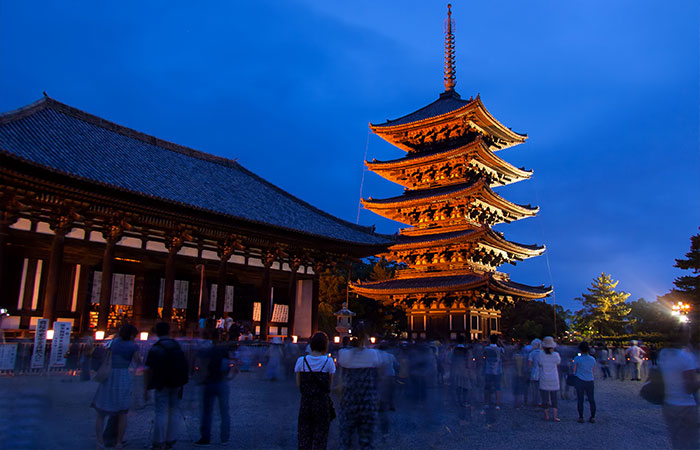Kyoto and Nara

The former imperial capitals of KYOTO and NARA are home to a sublime collection of temples, palaces, shrines and gardens. Both cities are deeply revered by the Japanese for their imperial history and renowned for their highly developed traditional arts and centuries-old festivals. Yet each has its own distinct personality. Kyoto is notoriously exclusive, whereas Nara has a more relaxed dignity; as a result, the two cities complement each other well - not least because in Nara you can see the foundations of traditional Japanese culture, which reached its zenith in Kyoto.
KYOTO
Kyoto was Japan's capital for over 1,000 years, and during that time became the repository of much of the best of Japanese art, culture, religion, and thought. Kyoto can be reached in 2 hrs. 40 min by Shinkansen super express from Tokyo and 1 hr. 15 min. from the Kansai International Airport near Osaka.
In the center of Kyoto you find the Kyoto Imperial Palace, renowned as a pinnacle for its simplicity of Japanese architecture. (Note: You must apply for a permit with your passport, 20 min. before the tour: 10 a.m. and / or 2 p.m.) Nearby is the more lavishly appointed Nijo Castle, home of the Tokugawa shogun on his rare visits to the city.

Kyoto Imperial Palace

Nijo Castle

Shijo-Kawaramachi

Kiyomizu Temple
The Gion Corner near Shijo-Kawaramachi is an excellent place to view traditional arts and traditional theater. Rows of tastefully designed old-style restaurants add to the distinctly refined atmosphere. In the Higashiyama area, Sanjusangendo Temple is noted for its 1,001 gilded wooden statues of Kannon, the Goddess of Mercy. Kiyomizu Temple is famous for its wide wooden veranda jutting out over an exquisite valley that extends to a panoramic view of the city. Ginkakuji Temple, or the Silver Pavilion, is renowned both for its exquisite architecture and the beauty of its understated landscape gardens.
The Katsura Imperial Villa, located in western Kyoto, is considered to be one of the finest examples of traditional Japanese architecture and garden landscaping. The Shugakuin Imperial Villa was built in the 17th century by the Tokugawa shogunate as a retreat for Emperor Go-Mizunoo. Permission must be obtained from the Imperial Household Agency to visit these sites. Apply for a permit as many days in advance as possible.

Ginkakuji Temple

Arashiyama District

Kinkakuji Temple

Ryoanji Temple
The Arashiyama district, only 20 min. by train from central Kyoto, is dotted with many celebrated temples and shops. The area can be easily enjoyed on foot, offering a superb walking experience especially on those fine weather days.
Western Kyoto contains musts for the tourist - Kinkakuji and Ryoanji temples. The brilliant Kinkakuji, or Golden Pavilion, is in excellent contrast to Ryoanji famed for its stone garden which is simplicity itself designed with only rocks and white sand.
NARA
Nara, 42 km. (28 mi.) south of Kyoto, is an older capital of Japan, and was also a major cradle of Japan's arts, crafts, literature, and culture not to mention industry. The major tourist attractions are clustered around Nara Sta. Nara Park is popularly known as Deer Park for its resident tame deer.
To the west lies Kofukuji Temple, founded in 710. Many valuable Buddhist statues are exhibited in the National Treasure House, and nearby is a five-storied pagoda which is mirrored in the Sarusawa Pond.

Nara Park

Kofukuji Temple

Todaiji Temple

Kasuga Grand Shrine
The Nara National Museum contains a collection of Buddhist art with pieces from every period. But perhaps the most famous of Nara's many ancient attractions is Todaiji Temple, where the Great Buddha of Nara sits. The Daibutsuden, where the Great Buddha is housed, is claimed to be the world's largest wooden structure.
Another attraction is the colorful Kasuga Grand Shrine erected in 768 - one of the most famous Shinto shrines in Japan. The vermilion-lacquered buildings create a beautiful contrast to the surrounding greenery. Some 1,800 stone lanterns stand in the shrine precincts and 1,000 metal lanterns are suspended from the eaves of its corridors.
Horyuji Temple, 45 min. by rail from Nara Sta., is not only superbly beautiful but one of the most important temples in Japan. The temple, the oldest intact temple complex in Japan, was founded in 607. Around 40 buildings make up the complex, and are said to be the world's oldest wooden structures.






